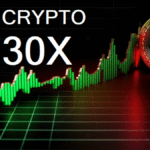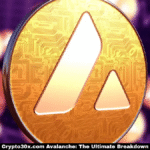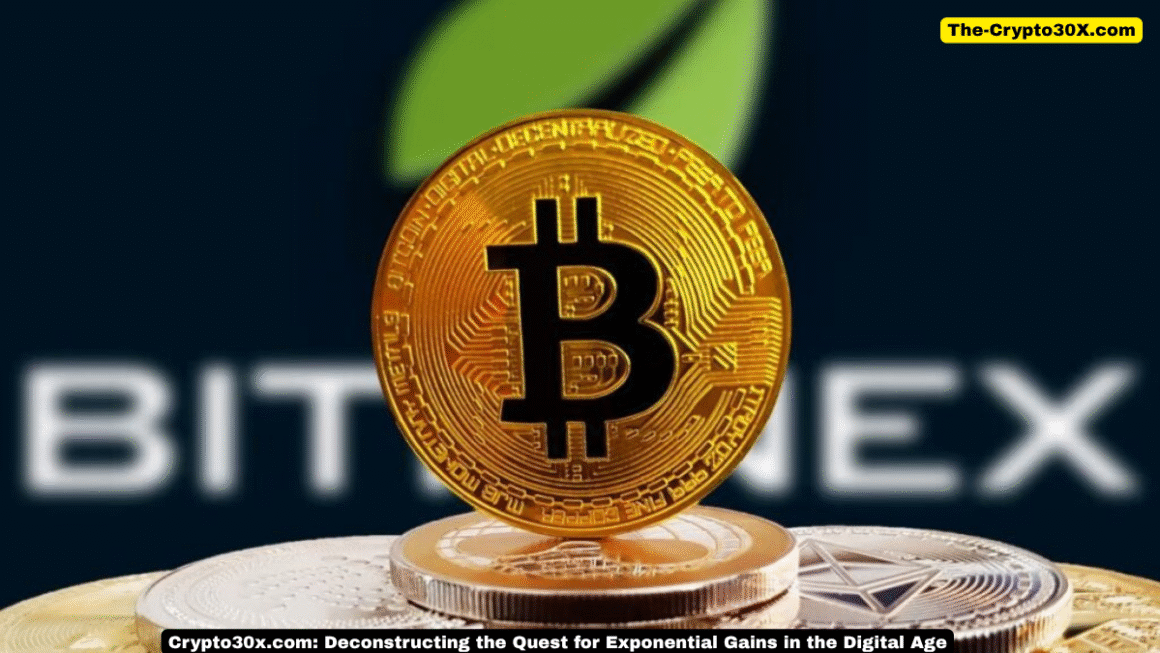
Welcome to the bleeding edge of digital finance, a world where fortunes are whispered into existence on the blockchain and the dream of a life-changing investment is just one click away. In this electrifying arena, names like crypto30x.com emerge, not just as websites, but as symbols of a powerful ambition: to achieve exponential, almost mythical, returns. The “30x” isn’t just a number; it’s a promise, a challenge, and a beacon for investors navigating the turbulent waters of the cryptocurrency market. It speaks of turning a modest $1,000 into $30,000, a goal that seems preposterous in traditional finance but feels tantalizingly possible in the volatile world of crypto.
But what lies behind such a bold claim? Is it a revolutionary algorithm, a team of market wizards, or simply a brilliant piece of marketing? This article will serve as your deep dive. We’re not just going to scratch the surface; we’re going to excavate the very foundations of what a platform like crypto30x.com represents. We will explore the potential technologies that could power such a system, from sophisticated AI trading bots to high-stakes leverage strategies. More importantly, we’ll cast a critical, expert eye on the immense risks that invariably accompany the promise of high rewards. This is a journey into the mechanics of greed and fear, technology and psychology, and the relentless human pursuit of the next big thing.
Our goal here isn’t to endorse or dismiss any single platform. Instead, it’s to arm you with the knowledge and critical thinking skills required to assess any opportunity that promises the moon. We will dissect the strategies, weigh the probabilities, and analyze the pitfalls. By understanding the intricate dance of risk and reward, you can move beyond the hype and begin to make informed, strategic decisions. Whether you’re a seasoned trader or a curious newcomer drawn in by the allure of a 30x return, this guide will provide the comprehensive perspective you need to navigate the future of crypto investing. Let’s pull back the curtain on the world of high-yield crypto platforms and see what truly makes them tick.
The Anatomy of Ambition: Understanding the “30x” Promise
At its core, the appeal of a platform named crypto30x.com is deeply psychological. It taps directly into one of the most powerful human motivators: the desire for rapid, transformative wealth. Traditional investment vehicles, like stocks or bonds, often promise respectable returns of 7-10% annually. This is the slow and steady path, the financial equivalent of planting an oak tree. A “30x” return, however, is a lightning strike. It’s not about building wealth for retirement in 40 years; it’s about fundamentally changing one’s life circumstances in a matter of months, or even weeks. This promise resonates because the crypto space has a history, albeit a rare one, of making this a reality. Early investors in Bitcoin, Ethereum, or even meme coins like Dogecoin and Shiba Inu saw returns that dwarfed 30x, creating a powerful narrative that such gains are, in fact, possible.
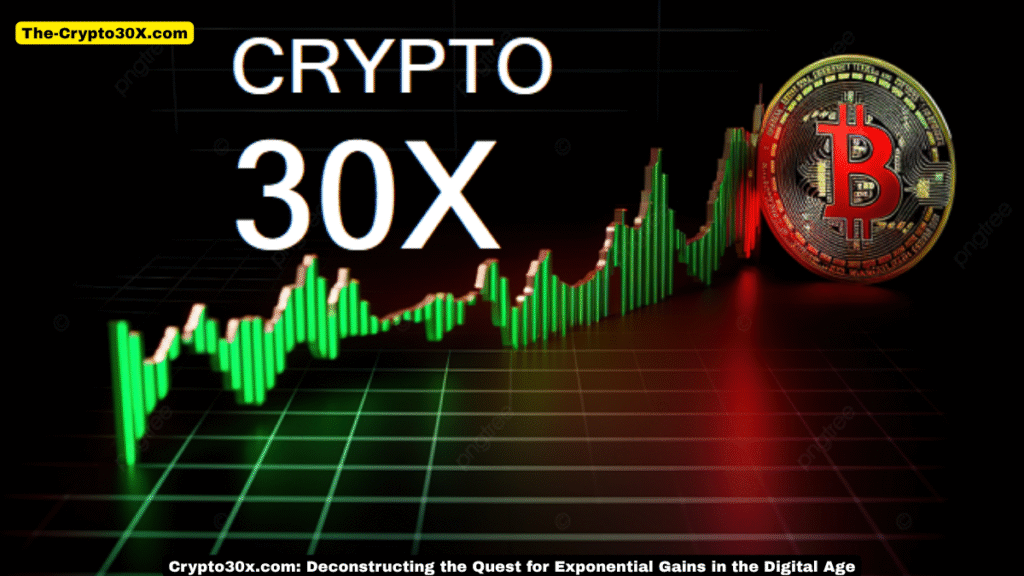
This historical precedent is the bedrock upon which the marketing of high-yield platforms is built. They leverage these legendary success stories to create a sense of FOMO (Fear Of Missing Out). The implicit message is: “It has happened before, and with our tool/system/platform, it can happen for you.” A platform like crypto30x.com positions itself as the key to unlocking this potential, suggesting it has a secret formula or a technological edge that can sift through the noise of the market and pinpoint the next explosive opportunity. This narrative is incredibly compelling because it offers a shortcut, a way to bypass the years of learning, the countless hours of chart analysis, and the emotional resilience required for manual trading. It promises to distill the complexity of the market into a simple, actionable solution.
However, an expert understands that the market of today is vastly different from the market of 2013 or even 2017. The landscape is more saturated, institutional players have moved in, and regulatory scrutiny is ever-present. Achieving a 30x return on an established asset like Bitcoin is now a near impossibility in a short timeframe. Therefore, the hunt for such gains has shifted to more volatile and obscure corners of the market: low-cap altcoins, meme tokens, high-leverage derivatives trading, and presale events. This is where the real risk lies, and where a platform’s true mettle is tested. The promise of crypto30x.com is therefore not just about finding a winner; it’s about navigating a minefield of potential failures, scams, and catastrophic losses to find that one golden ticket. Understanding this context is the first crucial step in moving from a hopeful amateur to a discerning analyst.
The Engine Room: Potential Technologies and Strategies Behind the Curtain
So, how could a platform like crypto30x.com theoretically attempt to generate such massive returns? It’s not magic; it would have to be rooted in specific, high-alpha strategies that exploit market inefficiencies and volatility. These methods are complex, technologically demanding, and carry significant risk. Let’s break down the most plausible engines that could be running behind the scenes, powering the quest for that coveted 30x multiplier. These are the tools of the modern digital prospector, each a powerful but dangerous instrument in the right (or wrong) hands.

First and foremost is the domain of Algorithmic and High-Frequency Trading (HFT). In a market that never sleeps, the ability to execute trades faster than a human can blink is a significant advantage. An advanced platform might employ sophisticated algorithms that scan hundreds or thousands of crypto pairs across multiple exchanges simultaneously. These bots aren’t just looking at price; they’re analyzing order books, volume flow, and liquidity depth. One classic strategy here is arbitrage, where the algorithm detects a slight price difference for the same asset on two different exchanges (e.g., Bitcoin is $70,000 on Binance and $70,050 on Kraken). The bot would instantly buy on Binance and sell on Kraken, pocketing the $50 difference. While one trade is small, doing this thousands of times per minute can generate substantial profits. A more complex form, triangular arbitrage, involves trading between three different currencies on a single exchange to exploit a price discrepancy, all within milliseconds. For a platform like crypto30x.com, the claim would be that their proprietary algorithms are faster, smarter, and more efficient at spotting and executing these opportunities than anyone else’s, compounding these small gains into a significant return over time.
A second, and increasingly prevalent, technological pillar is Artificial Intelligence (AI) and Machine Learning (ML). This goes beyond simple, rule-based algorithms. A true AI-driven trading system would aim to predict market movements before they happen. It could do this by processing vast, unstructured datasets that no human team could ever hope to analyze in real-time. For instance, the AI could perform sentiment analysis by scraping millions of posts from social media platforms like X (formerly Twitter), Reddit, and Telegram channels. By identifying shifts in public mood—from bullish excitement to bearish fear—the system could anticipate major price swings. Furthermore, an ML model could be trained on years of historical price data, learning to recognize incredibly subtle chart patterns and correlations between different assets that are invisible to the human eye. The marketing pitch for crypto30x.com could be that its unique AI, let’s call it the “Predictive Alpha Engine,” has achieved a high degree of accuracy in forecasting breakouts or breakdowns, allowing it to enter and exit positions at optimal moments, particularly in the volatile altcoin market where sentiment and hype play a huge role.
The third, and perhaps most direct path to a 30x return, involves the high-stakes world of Leverage Trading and Derivatives. This is where the real adrenaline and the real danger lie. Platforms like Binance, Bybit, and others offer derivative products like perpetual futures, which allow traders to bet on the future price of a cryptocurrency without owning it. The key feature is leverage. If you use 10x leverage, a 1% move in the price of the asset results in a 10% gain or loss for you. To get a 30x (or 3000%) return, one might theoretically use 100x leverage and hope for a 30% price move in their favor. A platform like crypto30x.com could function as a signal service or an automated bot that specializes in these highly leveraged trades. It might claim its system is uniquely adept at identifying “long” or “short” opportunities with high conviction, executing them with precise risk management. However, this is a brutal double-edged sword. With 100x leverage, just a 1% price move against you can result in the complete liquidation of your position. Your entire capital for that trade vanishes. Any system promising massive gains through leverage must be scrutinized with extreme prejudice, as it is magnifying not only potential profits but also the certainty of catastrophic loss if wrong.
Finally, there’s the strategy of Early-Stage Gem Hunting. This involves getting into projects before they become mainstream. This could mean participating in Initial Coin Offerings (ICOs), Initial DEX Offerings (IDOs), or simply buying new tokens on decentralized exchanges (like Uniswap or PancakeSwap) the moment they are listed. This is the digital equivalent of venture capital. Finding a project with a market cap of only $1 million that eventually grows to $30 million nets you that 30x return. A service like crypto30x.com could claim to have a dedicated research team or an advanced on-chain analysis tool that vets new projects. It would look at the project’s tokenomics (the economics of the token), the credibility and track record of the development team, the strength and engagement of its community, and the utility of its underlying technology. By identifying the “next Solana” or the “next Chainlink” in its infancy, the platform aims to secure massive returns for its users. The immense risk here is that for every one project that succeeds, thousands fail, turn out to be “rug pulls” (where developers abandon the project and run with investors’ money), or simply fade into obscurity. This strategy is less about quick trades and more about high-risk, high-reward speculation on the future.
Navigating the Minefield: The Undeniable Risks of Chasing 30x Returns
While the promise of a 30x return is intoxicating, the path toward it is fraught with perilous risks that can decimate your capital faster than you can say “blockchain.” An expert investor’s primary job is not to maximize gains, but to manage risk. Ignoring this principle is the fastest way to exit the market permanently. When evaluating a platform like crypto30x.com, a healthy dose of professional skepticism is not just recommended; it is essential for survival. Let’s illuminate the major categories of risk you must be acutely aware of before allocating even a single dollar.

The most fundamental risk is Market Volatility. The very force that makes 30x gains theoretically possible is the same force that can inflict 95% losses. The crypto market is notoriously volatile, driven by a complex interplay of technological innovation, macroeconomic factors, regulatory news, and raw human emotion. Even the most brilliant AI algorithm, trained on historical data, can be completely blindsided by a “black swan” event. Think of the sudden collapse of a major exchange like FTX, a sweeping regulatory ban by a major government, or a critical bug discovered in a major blockchain’s code. These events can trigger market-wide cascades of selling that no predictive model can foresee. Relying on a platform to navigate this for you is an act of immense trust. If the platform’s strategy is based on high leverage, a single, sudden, violent price swing can trigger a chain of liquidations, wiping out the accounts of its users in minutes. You are not just betting on the platform’s strategy being correct; you are betting that the market itself won’t have a seizure.
Next is the pervasive and sinister risk of Scams and Fraudulent Schemes. The semi-anonymous and largely unregulated nature of the crypto space makes it a fertile breeding ground for bad actors. High-yield investment programs (HYIPs) are a classic example. They promise unsustainably high and often “guaranteed” daily or weekly returns. In reality, they are almost always Ponzi schemes, where returns paid to early investors come from the capital of new investors. The scheme works as long as new money flows in, but inevitably collapses when it dries up, leaving the vast majority of participants with nothing. When you see a platform like crypto30x.com, you must immediately ask critical questions. Is the team public and verifiable? Is the company registered in a reputable jurisdiction? Do they offer a clear, plausible explanation of their strategy, or is it hidden behind vague jargon like “our proprietary AI secret sauce”? The biggest red flag of all is a guarantee of profit. In investing, there are no guarantees. Any platform that claims otherwise is, in all probability, designed to take your money.
Beyond outright scams, there is the critical technical consideration of Security and Custody Risk. This boils down to a simple question: who holds your crypto? If you are required to deposit your Bitcoin, Ethereum, or stablecoins directly onto the crypto30x.com platform to let its bot trade for you, you are surrendering custody of your assets. You are now exposed to the platform’s security vulnerabilities. What if their servers are hacked? What if an internal employee goes rogue? We’ve seen numerous exchange hacks over the years where billions of dollars in user funds were stolen. Unless a platform has institutional-grade security, audits from reputable cybersecurity firms, and insurance funds, depositing your assets is a massive leap of faith. A potentially safer model is one where a platform uses an API key to trade on your behalf from your account on a major exchange (like Binance or KuCoin). While this is better, as you retain custody, it still carries risk if you grant withdrawal permissions or if the API keys are compromised.
Finally, we must address the Psychological Risk. High-stakes investing is an intense mental and emotional game. The allure of a 30x gain can lead to incredibly poor decision-making. Investors might be tempted to pour their life savings into a single platform, ignoring the cardinal rule of diversification. If the investment starts to do well, euphoria can set in, leading to overconfidence and adding even more capital at the top of a move. Conversely, if the investment starts to sour, the fear of realizing a loss can lead to “revenge trading”—making bigger, riskier bets to try and win it all back, which almost always ends in disaster. A platform that bombards you with notifications of massive gains (whether real or fabricated) is designed to manipulate these emotions. It keeps you hooked, encouraging more deposits and more risk-taking. A true expert maintains emotional detachment, sticks to a predefined plan, and never invests more money than they are fully prepared to lose. This emotional discipline is often the final, and most important, defense against the dangers of the crypto market.
Building a Resilient Portfolio: Strategies Beyond the Hype
While the siren song of a platform like crypto30x.com is loud, building sustainable, long-term wealth in crypto often involves a more disciplined, less dramatic approach. True financial resilience isn’t built on a single lottery ticket; it’s constructed brick by brick through proven strategies that balance growth with capital preservation. These methods may not offer the adrenaline rush of a 30x moonshot, but they significantly increase your probability of staying in the game and growing your net worth over time. Let’s explore the foundational pillars of a robust crypto investment strategy that should complement, or perhaps even replace, the quest for exponential but uncertain gains.
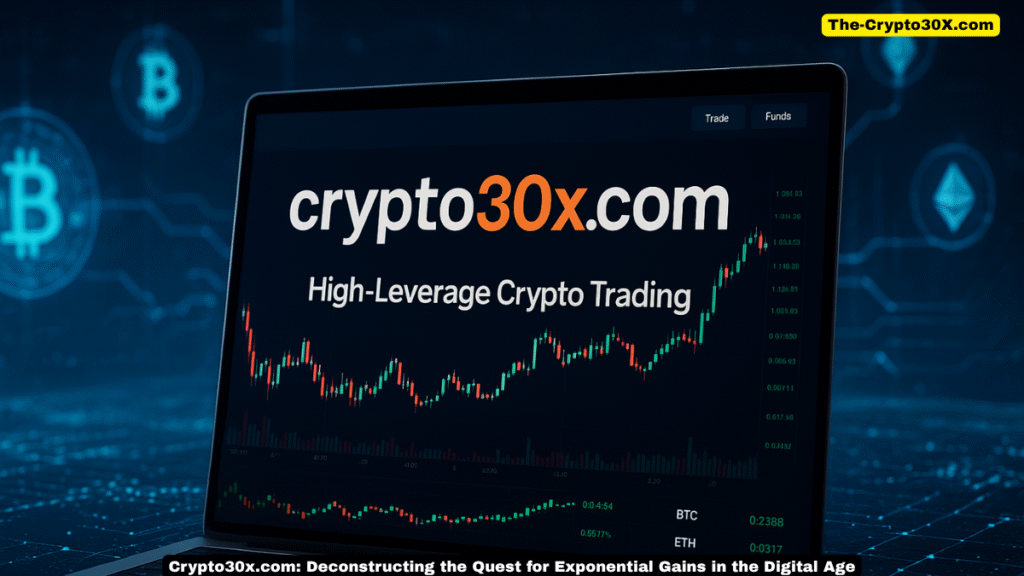
The most powerful and accessible strategy for the average investor is Dollar-Cost Averaging (DCA). The concept is beautifully simple: you invest a fixed amount of money into an asset at regular intervals, regardless of its price. For example, you decide to buy $100 worth of Bitcoin every Friday. When the price is high, your $100 buys less Bitcoin. When the price is low, your $100 buys more. Over time, this approach smooths out the effects of volatility and lowers your average cost basis. DCA removes emotion and guesswork from the equation. You’re not trying to “time the market,” a notoriously difficult, if not impossible, task. Instead, you’re committed to a long-term accumulation plan based on your belief in the asset’s future value. This is the antithesis of the high-stakes, all-or-nothing approach. It’s a strategy of patience and consistency, and it has historically proven to be one of the most effective ways for retail investors to build a significant position in major assets like Bitcoin and Ethereum.
The second core principle is Diversification. You’ve likely heard the adage, “Don’t put all your eggs in one basket.” In the hyper-volatile world of crypto, this is paramount. Relying solely on a single platform like crypto30x.com for your entire crypto exposure is the definition of concentrated risk. A well-diversified portfolio spreads risk across different types of assets. This could mean holding a significant portion in more established “blue-chip” cryptocurrencies like Bitcoin (as a store of value) and Ethereum (as a decentralized computing platform). It could then include smaller allocations to other promising Layer-1 blockchains (like Solana or Avalanche), specific application sectors (like DeFi, gaming, or AI tokens), and even a portion in stablecoins to act as dry powder for buying dips or to reduce overall portfolio volatility. Diversification ensures that if one sector or project fails catastrophically, your entire portfolio isn’t wiped out. It’s the only “free lunch” in investing, offering a reduction in risk without necessarily sacrificing long-term return potential.
Finally, you must make a conscious decision between Long-Term Holding (HODLing) and Active Trading. HODLing is an investment philosophy born from the belief in a project’s long-term fundamental value. HODLers buy and hold through bull and bear markets, weathering extreme volatility with the conviction that their chosen assets will be significantly more valuable in 5, 10, or 20 years. This approach is less stressful, requires less time commitment, and is often more tax-efficient than active trading. Active trading, on the other hand, is what platforms like crypto30x.com facilitate. It involves frequent buying and selling to profit from short-term price movements. It requires immense skill, time, emotional control, and a deep understanding of technical analysis. While potentially more profitable in the short term, statistics show that the vast majority of active traders fail to outperform a simple buy-and-hold strategy over the long run. Many successful investors find a hybrid approach works best: a core portfolio of HODL’d blue-chip assets, with a much smaller, separate “satellite” portfolio allocated for more speculative, high-risk trades or for experimenting with trading platforms. This allows you to build a secure foundation while still scratching that speculative itch.
The Future Trajectory: Crypto Wealth Generation in the Next Decade
The cryptocurrency landscape is in a state of perpetual evolution. The strategies that worked yesterday may not work tomorrow, and the platforms that dominate today could be obsolete in a few years. Looking ahead, the way wealth is generated in this space will likely become more sophisticated, more integrated, and potentially more regulated. Understanding these future trends is crucial for anyone looking to build lasting wealth, whether through platforms like crypto30x.com or their efforts. The next decade will see a maturation of the market, bringing both new opportunities and new challenges.

One of the most significant shifts is the continued explosion of Decentralized Finance (DeFi). DeFi aims to rebuild the entire traditional financial system—lending, borrowing, trading, insurance—on open, permissionless blockchains without intermediaries. This opens up new avenues for “productive” assets. Instead of just holding your crypto and hoping the price goes up, you can put it to work. You can become a liquidity provider on a decentralized exchange like Uniswap, earning fees from every trade that happens in your chosen pool. You can engage in yield farming, moving your capital between different lending protocols and liquidity pools to maximize your returns. You can also stake your tokens on Proof-of-Stake blockchains (like Ethereum), helping to secure the network and earning staking rewards in return. These DeFi strategies offer a way to generate returns that are not solely dependent on price appreciation, providing a powerful alternative to the “black box” trading algorithms of centralized platforms. While DeFi carries its risks, particularly smart contract bugs and hacks, it gives the user full control and transparency over their assets and strategies.
Another powerful trend is the deeper integration of Artificial Intelligence with Web3 technologies. While current platforms may claim to use AI, the future holds the promise of truly autonomous, on-chain economic agents. Imagine an AI that doesn’t just trade on a centralized exchange but actively participates in the DeFi ecosystem on your behalf. This AI could analyze thousands of yield farming opportunities in real-time, assess smart contract risk using advanced code analysis, and dynamically reallocate your capital to the most promising and safest options, all while your assets remain in your self-custody wallet. This vision of “autonomous finance” could democratize access to the complex strategies currently available only to the most sophisticated crypto natives. As AI models become more powerful and Web3 infrastructure becomes more robust, the very concept of a trading platform could evolve from a centralized service into a decentralized, AI-powered agent that you own and control.
Finally, we cannot ignore the inevitable march of Regulation and Institutional Adoption. As the crypto market grows, governments and regulatory bodies worldwide will increase their oversight. This will bring both pros and cons. On the one hand, regulation can bring greater legitimacy to the space, protect consumers from the most egregious scams, and pave the way for massive inflows of institutional capital through vehicles like Bitcoin and Ethereum ETFs. This institutional money will likely bring more stability and liquidity to the market. On the other hand, this same regulation could stifle innovation and reduce the extreme volatility that allows for 30x returns. As the market matures and becomes more efficient, the “wild west” days of finding a 100x gem may become a thing of the past. The successful investor of the future will need to be adaptable, understanding how to operate in a more regulated environment and how to identify value when the low-hanging fruit has already been picked. The game will shift from pure speculation to a more fundamentals-based analysis, rewarding those who can identify genuine long-term utility.
Frequently Asked Questions (FAQ)
1. What exactly is a platform like Crypto30x.com claiming to do?
A platform with a name like crypto30x.com is making a bold marketing claim about its ability to generate exceptionally high returns, specifically a 30-fold (or 3000%) increase on an investment. At its core, it’s positioning itself as a high-yield investment tool or service. To achieve this, it would theoretically need to employ aggressive and sophisticated strategies. These could include using AI-powered algorithms to predict market movements, engaging in high-frequency arbitrage trading to exploit tiny price differences across exchanges, utilizing high-leverage derivative trading to magnify gains, or employing a research team to identify extremely early-stage, high-potential altcoins (“gem hunting”) before they are discovered by the wider market.
The platform’s primary value proposition is that it has a proprietary “edge”—a secret sauce in its technology or methodology—that allows it to outperform the market consistently and dramatically. It’s selling a solution to the complex problem of crypto trading, promising to distill this complexity into a simple, profitable experience for the user. However, it’s crucial to approach these claims with extreme skepticism. The core function is to attract capital by promising extraordinary outcomes, and the user’s responsibility is to rigorously investigate whether there is any substance behind the promise or if it’s merely a high-risk gamble packaged in a sleek interface.
Ultimately, such a platform claims to be a shortcut to wealth. It suggests that by trusting its system, you can bypass the steep learning curve and emotional turmoil of trading yourself, and instead access a pre-built engine designed for exponential growth. The critical takeaway is to understand that this “engine,” no matter how it’s described, must be taking on an equally exponential amount of risk to chase those returns.
2. Are 30x returns in crypto possible?
Yes, 30x returns are possible in cryptocurrency, and there is historical precedent to prove it. This possibility is what fuels the entire speculative aspect of the industry. Early investors in foundational projects like Bitcoin and Ethereum saw returns that were many thousands of times their initial investment. More recently, during bull cycles, certain altcoins in hyped narratives like DeFi, NFTs, or meme coins have experienced explosive growth, turning small investments into fortunes in a matter of months. For example, a token bought during a presale or right at its launch on a decentralized exchange for a fraction of a cent can, in rare cases, surge to over a dollar, delivering returns far exceeding 30x.
However, it is critically important to frame this possibility with the correct context. These events are statistical outliers. They are the exception, not the rule. For every token that does a 30x, thousands of others fail, go to zero, or turn out to be scams (“rug pulls”). Achieving such a return requires either immense luck, impeccable timing, or taking on an extraordinary level of risk. It’s not something that can be reliably or repeatedly generated. Any platform that suggests 30x returns are a predictable or consistent outcome is misrepresenting the reality of the market.
So, while the dream of a 30x return is a valid and powerful motivator that keeps the market dynamic, it should be viewed as a lottery ticket, not an investment plan. It’s possible in the same way that a startup company can become a billion-dollar unicorn, but the vast majority do not. An expert investor hopes for such returns but builds their strategy around more sustainable and probable outcomes.
3. What are the biggest red flags to watch out for with high-yield crypto platforms?
Navigating the world of high-yield platforms requires a sharp eye for red flags. Being able to spot these warning signs can be the difference between a calculated risk and a guaranteed loss. The first and most glaring red flag is any guarantee of profits. Investing, by its very nature, involves risk. There are no certainties in any market, least of all crypto. Any platform that promises or guarantees a specific rate of return (e.g., “1% daily profit, guaranteed!”) is almost certainly a Ponzi scheme or a scam.
A second major red flag is a lack of transparency. Who is the team behind the platform? Are they public figures with verifiable track records and LinkedIn profiles, or are they anonymous avatars with generic names? Where is the company registered? Is there a physical address? A legitimate enterprise is not afraid to be transparent. Furthermore, is their investment strategy explained in a clear, logical way, or is it hidden behind vague, impressive-sounding but meaningless jargon like “our proprietary quantum AI algorithm”? Secrecy is often a cloak for a lack of substance or fraudulent intent.
Other critical red flags include high-pressure sales tactics. If a platform uses countdown timers, “limited spots available” messaging, or referral bonuses that create a sense of urgency, it’s often designed to make you act emotionally rather than rationally. Be wary of systems where the only way to earn significant returns is by recruiting others. Also, look for poor website design, grammatical errors in their whitepaper or marketing materials, and a weak or non-existent community presence on legitimate social platforms. Finally, if the platform requires you to send your crypto to a personal wallet address rather than a professional, integrated system, run the other way immediately.
4. How can I manage risk when exploring high-reward crypto opportunities?
Managing risk is the single most important skill for any investor, especially in the volatile crypto space. The first and most crucial rule is: never invest more than you are willing to lose. This should be money that, if it vanished tomorrow, would not impact your ability to pay bills, your quality of life, or your long-term financial goals. This is often called a “speculative allocation” of your portfolio.
Secondly, diversification is key. Even when exploring high-risk opportunities, don’t put all your speculative capital into one platform or one coin. Spread it across several different projects or strategies. This way, if one fails, it doesn’t wipe out your entire high-risk portfolio. Your allocation should be a pyramid: a large base of safer assets (like Bitcoin, Ethereum, and stablecoins), a smaller middle section for established altcoins, and only a tiny tip of the pyramid for extremely high-risk, high-reward plays like those offered by a platform like crypto30x.com.
Third, do your research (DYOR). Never blindly trust the marketing of a platform. Spend hours, not minutes, investigating it. Read third-party reviews, search for discussions about it on Reddit or Twitter, try to understand its underlying strategy, and vet the team behind it. Assume it’s a scam until you can find compelling evidence to the contrary. Finally, use strong personal security practices. Use unique, strong passwords, enable two-factor authentication (2FA) everywhere, and be extremely cautious about which platforms you give API access or custody of your funds to. Risk management is a proactive, not a reactive, process.
5. Is it better to use a trading platform or learn to trade myself?
This question gets to the heart of an investor’s personal goals, time commitment, and risk tolerance. There are distinct pros and cons to both paths, and the “better” option is highly individual. Using a trading platform or bot like crypto30x.com offers the primary advantage of convenience and time-saving. It purports to automate a complex process, allowing you to potentially access sophisticated trading strategies without needing to spend years learning technical analysis, coding, or market psychology. It’s a “set it and forget it” approach (in theory) that can be appealing to those with limited time or expertise. The major downside, however, is a loss of control and transparency. You are placing your complete trust in a “black box,” often with little understanding of the risks it’s taking on your behalf. You’re also exposed to platform-specific risks like scams, hacks, or simple incompetence.
Learning to trade yourself, on the other hand, offers the ultimate control and empowerment. You make every decision, you understand the rationale behind every trade, and you are not exposed to third-party platform risk (beyond the exchange you use). Over time, developing this skill can be incredibly rewarding, both financially and intellectually. It allows you to adapt to changing market conditions and be fully sovereign over your financial destiny. The significant disadvantages are the immense time and effort required. Learning to trade profitably is a difficult, stressful, and often expensive journey filled with beginner mistakes. The learning curve is incredibly steep, and the vast majority of people who try to become active traders fail to be consistently profitable.
A balanced approach for many is to do both. They build a core portfolio based on their research and long-term holding strategies (the “learn yourself” path). Then, they may allocate a very small percentage of their capital to experiment with automated platforms, treating it as a learning experience or a high-risk speculative bet, rather than as their primary investment strategy. This allows them to maintain control over the bulk of their assets while still exploring the potential benefits of automated systems.



